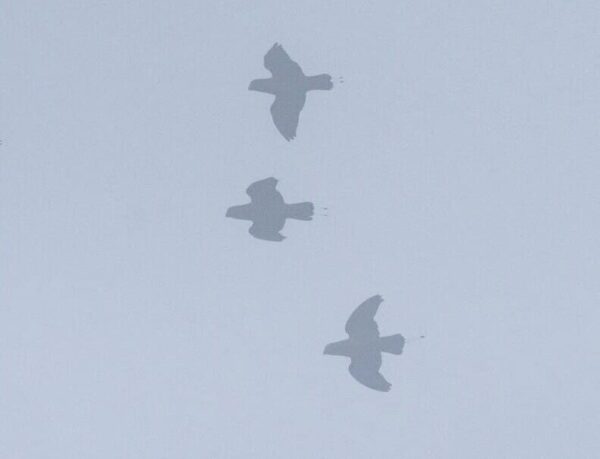Mountain Racquet-tailed Parrot
Also known as:
Montane Racquet-tailed Parrot, Montane Racquet-tail, Luzon Racquet-tail, Red-crowned Racquet-tailed Parrot
Also known as:
Montane Racquet-tailed Parrot, Montane Racquet-tail, Luzon Racquet-tail, Red-crowned Racquet-tailed Parrot

Prioniturus

montanus
Size:
30 cm (11.7 in)
Weight:
100-140 g (3.5-4.9 oz)
Subspecies including nominate:
one
Colour Adult:
Male-olive/brown rump, face blue, prominent red patch on crown. Central tail feathers green, racquets black/blue, side feathers dark blue tipped black. Beak blue/grey, eye brown. Female- as in male but entire head green.
Colour Juvenile:
As in female but with no tail shafts.
Call:
Loud, shrill sounds; when startled gives kak kak ak ak ak notes.
More Information:
Content Sources:
CITES
BirdLife International
Cornell Lab of Ornithology/Birds of the World
A Guide to Parrots of the World, Juniper and Parr, 1998
Parrots: Status Survey and Conservation Plan 2000-2004, Snyder, McGowan, Gilardi and Grajal, 2000.
Parrots of the World, Forshaw, 2006. 2010 edition
Captive Status:
Not seen in captivity.
Longevity:
—
Housing:
—
Diet:
—
Enrichment:
—
Nest Box Size:
—
Clutch Size:
Not recorded.
Fledging Age:
—
Hatch Weight:
—
Peak Weight:
—
Weaning Weight:
—
World Population:
4000-12,000 mature individuals, decreasing.
IUCN Red List Status:
Near Threatened
CITES Listing:
Appendix II
Threat Summary:
Not globally threatened. Restricted-range species. The main threat to this species is forest loss. Its preference for montane forests, however, safeguards it from the more rapid reductions in forest extent and integrity in the Philippine lowlands. Trapping may be a threat to this species. As a montane species, it may be affected by climate change, although there is currently no evidence that direct or indirect effects are occurring.
Range:
Mountanous Luzon, N Philippine Islands.
Habitat:
Found in humid montane forest from 850-2900 m (2788-9512 ft).
Wild Diet:
Eats seeds, fruit, berries and nuts; have been reported in cultivated areas.
Ecology and Behaviour:
Seen singly or in pairs, sometimes in groups; noisy and conspicuous in flight; difficult to find while feeding.
Clutch and Egg Size:
Not recorded.
Breeding Season:
As early as July through to September. Nest is cavity in tall tree, usually oak.

